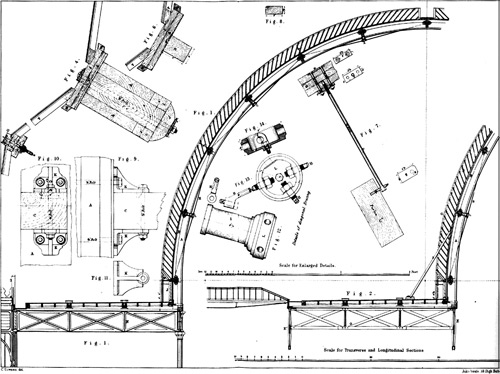
[Crystal Palace Construction Details from Studies in Tectonic Culture by Kenneth Frampton]
Although we’re a design-build firm, we work with General Contractors on occasion. We’ve got a handful of GCs that we really enjoy working with and we’ve done some work together that we’re all very proud of. During the process of construction administration, there’s a question that we always make sure and ask a GC:
![]() What makes for a good architect?
What makes for a good architect?
And the answer is almost always consistent. A resume full of all the right names perhaps? Nope. A phenomenal education full of impressive degrees? Negative. Impeccable style and a knack for wearing blacks and grays in an agreeable yet fashion-forward manner? Go fish.
The answer, as it turns out, is not about where you’ve been, who you know, or how you look. The answer is more about how you are in the moment. The answer we get more than anything else is actually quite simple:
![]() A good architect is someone who rolls up their sleeves on site and helps problem solve.
A good architect is someone who rolls up their sleeves on site and helps problem solve.
It’s a great answer and one that’s important to us because it addresses a fundamental characteristic of being an architect. Being the type of person who figures things out is critical to the profession of architecture. The ability to put a project together in your head, identify the issues and bird-dog the solutions is what differentiates a professional architect from “kid’s playing” (a term we like to use for architects who don’t actually solve problems). That architects have the knowledge base, aptitude and drive to figure out built-solutions is the reason that architecture is a profession rather than an obscure extension of the arts. In our opinion, figuring out solutions and problem solving is more important than style, it’s more valuable than winning competitions and it’s more significant than having your name on a monograph.
But for such a simple and primary characteristic, it tends to get lost in the nebulous world of design. With the proliferation of paper architecture (or theoretical architecture as academia likes to call it) the appreciation of sitting down and actually figuring out how something goes together is slipping between the cracks. This is a shame, and it’s devaluing the profession of architecture.
So today’s post is simply an acknowledgment to all the architects out there who figure it out. The architects out there who apply their skills to real built work; the architects who roll up their sleeves and problem solve. Cheers to you.





